Big on Huge Maps and Realism - History of Bohemia Interactive, Masters of Their Craft
From 10-person team in Czechoslovakia, to... a hundred days in Greek prison. Bohemia Interactive are the masters of super-realistic military sims best known for Arma, but there's a lot more to this studio than the famous war game.
GTA 5 has become a synonym of an immortal game that, despite passage of time and changing generations, is still doing well, doesn't complain about drastic decrease in the number of players, and keeps selling well. Although various “facelifting” efforts were needed with subsequent releases on newer platforms, the game still looks excellent and doesn't stand out from any modern game. It owes its longevity to the constantly supported multiplayer mode and its open-ended nature that gives us access to a huge number of mods, which can completely alter the experience.
In addition to GTA, there’s at least one more game on the market that can boast an equally good condition, tens of thousands of players on the servers, great graphics and countless mods despite being almost a decade old – it is Arma 3 by Czech Bohemia Interactive. Interestingly, the game is exactly 5 days older than GTA 5 – both were released in September 2013.

In both cases, fans expect a successor in the form of a sequel, which would again set new standards in terms of gameplay quality, intricacy of mechanics, capabilities of the engine, and realistic graphics. The latest info from Bohemia says they're focusing all their efforts on the development of the latest Enfusion engine, which ought to power Arma 4. The screenshots also herald photorealistic graphics. However, we still have to wait for the official announcement of the new Arma. In the meantime, let's recall the beginnings of Bohemia Interactive and this very series, from the time when it wasn't called ARMA, but rather Operation Flashpoint.
Atari and hovercraft
The history of Bohemia Interactive begins in the 1980s. Living in Czechoslovakia, Mark and Ondrej Spanel were, at the time, immensely fascinated with the first PCs. First, they wrote simple programs in BASIC, then came Atari XL and attempts to create their own games. The brothers then founded the Suma studio. Earning money on making games in a communist country, however, was not easily achievable. After the fall of the Iron Curtain, another important figure appears on the radar – Slavomir Pavlicek becomes a co-founder of the JRC company, which, in turn, quickly becomes the main distributor of games and a chain of computer stores in Czechoslovakia. In the 1990s, it was the official PlayStation distributor in this country.

In 1992, Marek Spanel joined the JRC company, initially as sales manager. However, he did not give up his passion for programming and soon, his Invasion from Aldebaran appeared on the market – it was a clone of the classic Invaders, inspired by a story from the Polish science fiction classic, Stanislaw Lem. The first money earned on his own game gave Marek a great motivation to continue working in this field with Pavlicek and JRC. Subsequent events turned out to be instrumental for the creation of Operation Flashpoint.
Shortly after the break-up of Czechoslovakia, in 1994, Marek Spanel was called up for military service, but thanks to several circumstances, he was able to serve in the capital city Prague and thus continue to develop games. Observations, knowledge and experience gained during his stay in the military resulted in many ideas for his future game. Both Spanel brothers became fascinated with the genre of military simulators. In 1995, Gravon: Real Virtuality was created, in which the players controlled combat hovercraft on procedurally-generated maps. The game was noticed in the West, even got some good reviews, but sold poorly, mainly due to exclusivity on Atari Falcon, which was then dying out.
Road to Bohemia
In 1997, the Spanel brothers began developing their own Real Virtuality engine to power their next game, Poseidon. The gameplay focused on heavy vehicle fights, mainly tanks and helicopters, in large spaces. The publisher from the USA – Interactive Magic company – got interested in this product. The Americans invested one hundred thousand dollars in this project and taught the Czechs a professional approach to development, and rented an office so the handful of programmers wouldn't have to work from their own homes. They also suggested changing the title from Poseidon to Flashpoint.
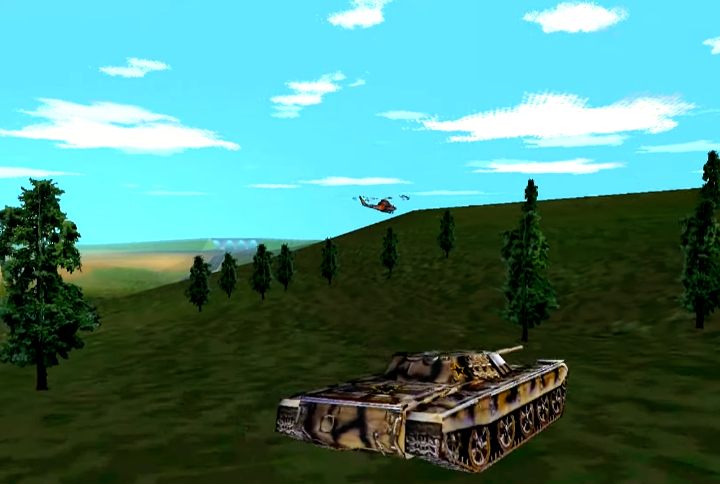
At that time, PC gaming was undergoing a real revolution. More and more powerful graphics cards appeared, and subsequent productions eagerly employed the capability of 3D graphics acceleration. The Czechs fell into the snares of great ambitions and ideas, seeing more and more opportunities for their game. The initial plans to make soldiers just an extra addition to vehicle combat have changed, making the game an increasingly comprehensive military simulator. Works on Flashpoint dragged on dangerously long, and the original release date in 1999 became unfeasible. In the meantime, Interactive Magic managed to go bankrupt. The buyer of some of its shares, Ubisoft, saw more potential in Red Storm Entertainment and its Ghost Recon – so they were not interested in the Flashpoint project.
In 1999, Marek and Ondrej Spanel along with Slavomir Pavlicek decided to set up a new studio based on the former Sumy – called Bohemia Interactive – and look for a new publisher for Flashpoint under this new banner. The advertisment using a real T-55 tank at Invex forum in the Czech Republic paid off. The team signed a contract with Codemasters, which helped complete the game and release it globally, although one of the clauses of the contract stipulated the transfer of the rights to the brand. In 2000, this game became Operation Flashpoint: Cold War Crisis. A year later, on June 22, it finally launched and turned out to be a huge success!
One step away from RDR-style western
OFP: Cold War Crisis received the Game Developers Conference Rookie Award in 2002 from Gabe Newell himself, beating Remedy studio's Max Payne! The realistic soldier simulator was an appealing diversion among the FPP games of the era. It had a captivating, cinematic plot and was a genuine sandbox – the assigned tasks could be completed in various ways, and the game let us play as riflemen, commandos, tank commanders and helicopter pilots. In addition, the support for mods provided endless amounts of playability.

A year later, Resistance was released, and for many devs working in Bohemia, it remains their favorite game. The DLC focused on guerrilla warfare and added a logistic aspect to the existing mechanics of soldier sim, such as taking care of supplies of weapons and munitions. A slightly more extensive Resistance could even become a full-fledged sequel of OFP, but Bohemia didn't want to create another Flashpoint at the time. Their intention was... a cowboy simulator, i.e. the same engine and mechanics used in a Wild West setting – so, the Czechs essentially wanted to make Red Dead Redemption before Rockstar.
Crisis and conflict with Codemasters
Unfortunately, the journey through the USA in search of inspiration, which the developers made on the occasion of traveling to the Game Developers Conference awards, showed the bleak reality: poverty that indigenous peoples experienced in various reserves. Idealistic visions and images based on movies collided head-on with reality. The Czechs gave up the western project, additionally predicting that the 10-person Bohemia team is at least a few people short for a project that involved a multiplayer mode.
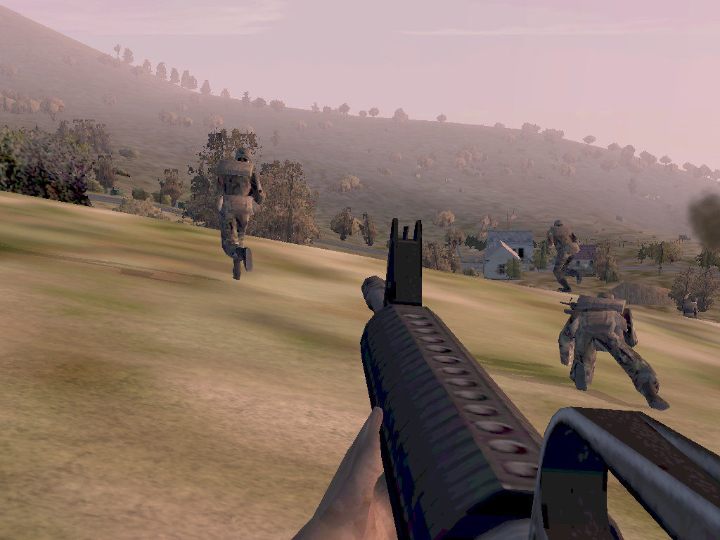
However, it was incorrectly assumed that this number of people was enough to continue supporting Cold War Crisis and at the same time create a port for the Xbox, AND prepare the full-fledged sequel. Programming for consoles turned out to be very problematic for the inexperienced team, while work on the new Flashpoint, codenamed "Game 2," focused on endless, small, obsessive details that didn't really bring the project closer to the final. Subsequent deadlines went by, which annoyed the publisher, Codemasters, who started looking for subcontractors to finish the job. Bohemia, in turn, did not want to agree to that. The conflict between the companies was growing and everyone just wanted to break the uncomfortable contract, which had been signed quite recently. Without financial support, the Czech publishers found themselves in serious trouble.
Marines to the rescue! The birth of VBS
The US Marines saved Bohemia Interactive from impending bankruptcy! Soon after the premiere, a company in the US of A was buying out Operation Flashpoint boxes wholesale. It turned out that a clever broker added to the Czech FPP simulator a mod called DARWARS Ambush! and sales this product to the USMC corps as training programs. The practice was quickly regulated, which gave Bohemia a small financial boost and – more importantly – made them realize that not only there was a niche to fill in the military sector, but also that they had exactly the engine they needed. This is how VBS was born.
VBS – Virtual Battlespace was founded in 2001 in cooperation with Australian David Lagettie. A separate Bohemia Interactive Australia studio was established, only concerned with developing the military simulator. The Operation Flashpoint engine provided all the initial requirements: a huge map with lots of details, the mechanics of giving commands to small infantry units, and a flexible engine that was susceptible to mods and changes.
Bohemia Interactive and MicroProse – what do they have in common?
The fate of Bohemia Interactive was twice entangled with the fate of people associated with the legendary MicroProse studio. First, there was a short adventure with Interactive Magic – the company of Bill Stealey, a former military pilot who founded MicroProse together with Sid Meier.
The above-mentioned David Lagettie turned out to be the future owner of the brand and MPS titles. He bought the rights and reactivated the studio in 2019.
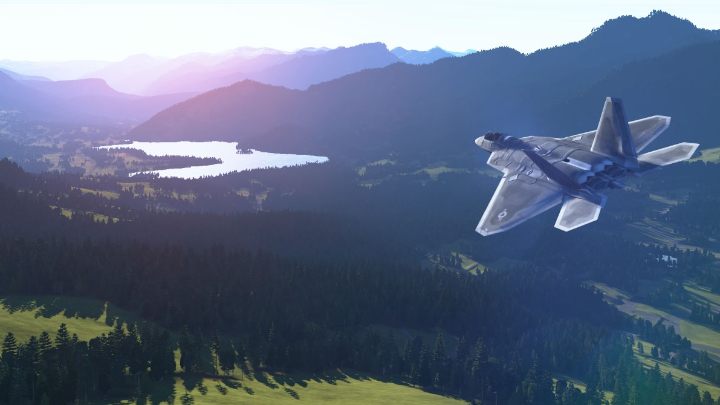
The first client was the US Marine Corps, for which the MOUT module, focused on city combat, was created. In 2002, post-battle reports functionality was added, along with a spectator mode. In the following years, the program was constantly improved, also in cooperation with the Australian Defense Force Academy. It was used by, among others, the British, Israeli, Canadian, Australian, and American Marines, the National Guard, and in West Point. VBS offered a realistic simulation of battlefields with the possibility of land, water and air operations. The scenarios were accompanied by fog, rain, wind and a day-night system.
On April 17, 2007, VBS 2 launched – created in close cooperation with many military formations. It allowed to practice the procedures and tactical techniques of attacks, defense and patrolling at platoon level. It was also used for non-military exercises, in the event of any other threats that required action of the uniformed services. In part two, it was possible to create an area of 10,000 square kilometers, with five times greater range of drawing distance, which finally made it possible to simulate attacks from helicopters and vehicles at realistic distances. The buildings were destructible, and all materials were subject to bullet penetration.
Currently, the fourth generation of software – VBS 4, is in use. Bohemia Interactive Simulations from Australia employs over 300 people from different countries, delivering projects to over 50 organizations from the defense industry around the world.
ArmA – a forced, coincidental title
But let's go back to the commercial activities of Bohemia and the year 2005. Without the support of Codemasters, without the rights to Operation Flashpoint, with ambivalent reception of the Xbox port of OFP: Elite (ratings ranged from 10% to 90%) and with funds running out, the Czechs had to release another game at all costs – and it was still just "Game 2." However, this project turned out to be too ambitious for that time. It was supposed to be a complete simulator with three huge maps (Chernarus, Takistan and Basta), realistic physics, detailed vegetation and elaborate destruction of the environment.
Instead, they took the Xbox OFP: Elite's engine and improved assets from Flashpoint to release the next game cheaply and quickly. In this way, in 2006, the first game in the Arma series was completed – a true sequel to Operation Flashpoint, despite a different title. The loss of rights to Codemasters was not the only problem the Czechs faced. Their new game – Armed Assault – sounded all too similar to Armored Assault, a game released in 2002, so they started to use the ArmA abbreviation. And what's interesting – that ArmA and the modern Arma are completely different names. Today, it's no longer an abbreviation, but a Latin word for "weapon," and this is the name under which most players know this title, although not everywhere. In some countries, Arma 3 is still called Armed Assault 3, although this is a misnomer.
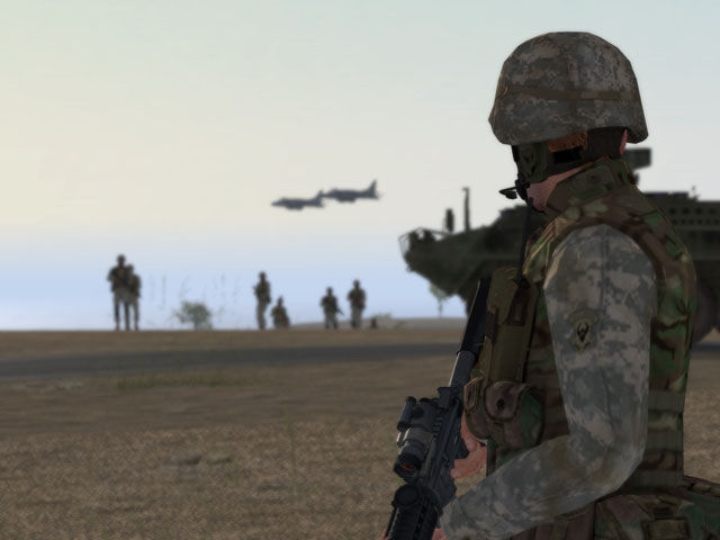
ArmA was one of those games that got a bumpy start. The plot was credible, the setting and gameplay were realistic, the multiplayer mode was great and new script capabilities were all overshadowed by the terrible technical condition. In the end, however, it was an early access release, and fans were generally aware of the risk of bugs. A year later, Queen's Gambit was released, with a new island and two story campaigns. Despite the challenges and different opinions, ArmA was well received and sold enough copies to allow Bohemia to continue to operate – resuming work on the greatest project, "Game 2."
"Game 2" – an ambitious project finally commences
The Czechs could finally focus on their most ambitious plans, using some of the materials prepared for "Game 2" and mustering all the experience gained during the development of the VBS. The possible console version was quickly abandoned – Xbox 360 turned out too weak to cope with the graphics and mechanics of the game. The Arma was built on Real Virtuality 3 engine, which was developed for a decade – the same one used by VBS 2 at that time. It offered a drawing distance of 15 kilometers, realistic day and night cycles, and variable weather and visibility conditions. The physics engine calculated the ballistics for each bullet, and all events were generated dynamically in accordance with current situation on the battlefield, including the AI radio responses. In general, the scale of the scenarios and the number of units was limited only by the computer's capabilities.
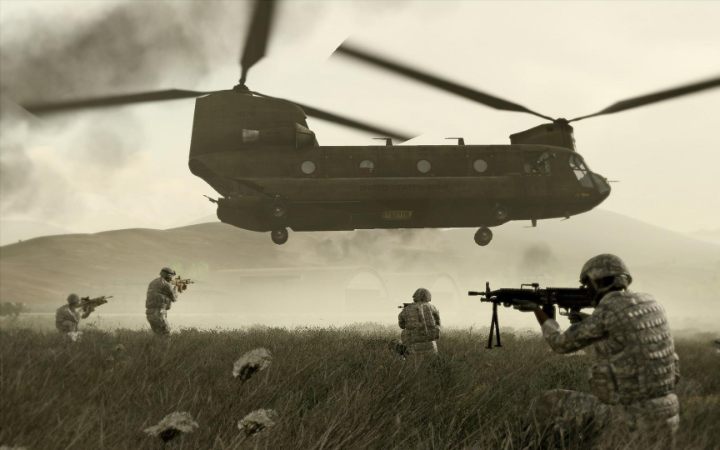
The smooth progress of development was interrupted for a moment by the announcement of the new Operation Flashpoint, prepared by Codemasters. Marek Spanel had been afraid of this for a long time, but after seeing the first presentation of the game at gamescom 2008, he breathed a sigh of relief. The garden-variety "console shooter" did not even come close to what was planned for the new Arma. However, there were some hitches. Spanel was furious, for example, that the game was advertised as a sequel to OFP: Cold War Crisis, i.e. something that ArmA was in reality. Later on, tables were turned. It was Codemasters who were outraged, even threatening with court, over the name of the Arma 2 – Operation Arrowhead expansion pack, which, according to the rights to the brand, was too similar to Operation Flashpoint.
Arma 2 was released on June 19, 2009, reaping good reviews, although the history repeated itself again. The technical condition on release was quite abhorrent, artificial intelligence practically did not work, but the magic of the graphic design, realism, the scale of warfare and the huge map won players' hearts and minds again. The game was the quintessence of PC exclusivity and gave even the most powerful machines a run for their money. Suffice it to say that it won the title of "the most PC game of the year."
The creators continued their work after the premiere, not only patching their game, but also releasing DLCs. By 2012, Operation Arrowhead, British Armed Forces, Private Military Company and Army of the Czech Republic expansions were released, along with new units, story campaigns and a desert map. A slightly smaller project, Take On Helicopters, was also implemented, enabling players to fly helicopters in various circumstances – including civilian.
Bin the aliens for now
Shortly after the release of Operation Arrowhead, works began on a full-fledged continuation, in a more futuristic setting this time. The game was tentatively named Arma Futura. The player was supposed to fight aliens in it, and the gameplay was to include some RPG mechanics. With time, however, this idea was abandoned. The invasion of aliens, along many futuristic ideas, were abandoned in favor of a more realistic war in contemporary setting. Today, we know that the desire to do Arma with aliens was not a one-time whim, but actually a more detailed plan that just needed a little more time to be fully implemented. The 2019 Arma 3 add-on called Contact finally brought the encounter with an alien civilization.
Flashpoint is coming home!
Codemasters tried to cash in on Operation Flashpoint by releasing a sequel to called Red River, but it further frustrated their efforts. So they abandoned the shooter genre altogether, focusing solely on racing (let's appreciate this mature decision), and after the expiry of the contract, Bohemia Interactive finally regained the rights to its original game. In 2011, it was re-released as Arma: Cold War Assault, to nicely fit the entire series. Fans, in turn, recreated that game's entire campaign on the Arma 2 engine and released it as a mod called Cold War Rearmed. You could say that the game that started it all finally came home.
Spies just like these?
The development of the third entry in the series is the darkest period in the history of Bohemia Interactive. On September 10, 2012, the Greek media reported that two Czechs had been arrested on suspicion of espionage. The detainees turned out to be Martin Pezlar and Ivan Buchta from Bohemia, and the direct reason was photographing military objects on the island of Limnos. The Czechs did not plead guilty and both they and the studio officially claimed that the developers were only on vacation. It was emphasized that the work on the virtual version of the island was practically finished and all the photographies were merely a souvenir.
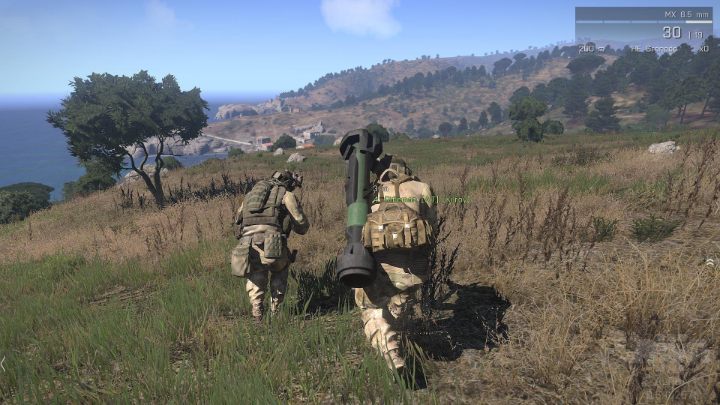
However, the Greeks treated this as a very serious violation of the law. The pair of alleged "spies" have reportedly taken thousands of photos, the excuse about the vacation did not really hold water because they were there without families, and both men were obviously working on a military simulator. On top of that, the Greeks already had some strong opinions about it. A year earlier, they even discussed in their parliament about whether the release of the game was a threat to national security.
Even the Czech President Vaclav Klaus pleaded for their release, and Marek Spanel encouraged the gaming community to pressure the Greek government. At that time, Bohemia even released an RTS game called Carrier Command: Gaea Mission, which was a remake of the classic Carrier Command from 1988, but nobody cared about its reception. The team's morale was very low and everyone's thoughts went to their colleagues in custody. Thanks to intense diplomatic efforts, both developers were eventually released, but not before spending as many as 129 days in prison,.
Arma 3 forever...
The "espionage" incident influenced the shape of the third Arma. The quite realistically presented conflict in the story campaign has been fictionalized just a tad more. The real name of the island of Limnos has been removed and replaced with fictitious Altis. The release of the game in September 2013 brought quite warm a reception, although it was in post part due to almost photorealistic graphics and various technical bells and whistles. The core content of this game was shredded, though. The campaign was broken down into episodes, the first of which wouldn't appear for another month. Single-player simmers only got a tutorial, a few missions showing the capabilities of military equipment and the main mechanics.

The shortcomings were to be replaced by the powerful mission editor and Steam Workshop, in which mods quickly began to spring up. To date, over 100,000 various mods have been created. After a modest beginning, Bohemia started to systematically support the game. The Real Virtuality 4 engine was improved several times, free and paid content was added, bringing new campaigns, locations and units. Nine years after release, Arma 3 still boasts one of the most active communities on Steam and tens of thousands of players on the servers every single day. Despite the years, the game still looks great, and the sheer amount of content and mods means that everyone can find something of interest.
...and DayZ's odyssey
In addition to DLCs for Arma 3, Bohemia Interactive have been busy for a few years now developing another project that, for various reasons, was stuck in underdeveloped early access for many years. Of course, I am talking about the zombie apocalypse survival simulator, DayZ – a game that appeared in the company's portfolio somewhat by accident. It all started in the times of the second Arma, when Dean Hall, a soldier from New Zealand, created a mod for it designed for provoking strong emotions and stressful situations. His intention was to prepare a tool for training soldiers so that they could behave properly and think clearly in such conditions.
The idea came up during a jungle exercise with the Singapore Army in Brunei, when Hal was badly injured during survival tasks. He wanted to transfer to the game everything he felt then, i.e. a sense of danger, thirst, hunger, unexpected wounds, diseases, and unpredictable behavior of the people he met. Hall even described his mod as an "anti-game" that breaks all the rules and conventions of this kind of entertainment. There was no balance what so ever in the conventional sense, and the mechanics, instead of relaxing, were intended to frustrate the player on purpose.
Even so, the mod achieved a staggering success that Hall attributed to lack of such challenging titles on the market, and the publicity the game received on social media and forums through people sharing their impressions and adventures. Thanks to DayZ, sales of the aging Arma 2 soared. Bohemia decided to strike the iron while it was hot and announced the commencement of development of the full-fledged DayZ, with Dean Hall as the project leader.

The initial plans dating back to August 2012 to release the first build by the end of December of the same year, turned out too optimistic. A very modest alpha version was finally released in December, but of the following year. From thence on, a long period of Early Access began, and the huge interest diminished significantly over time. Dean Hall left the ranks of Bohemia Interactive rather quickly, in 2014. At that time, a smaller subcontractor, Cauldron studio, was acquired to deal exclusively with the development of DayZ. Over the next years, the engine was modified to accommodate some new mechanics, new elements were added, and console versions were also announced. After many tribulations, the official 1.0 version was released on December 13, 2018, and soon, editions for PS4 and Xbox One followed. Until its release, a total of over 4 million copies had been sold.
Not just Arma 4 – the future of Bohemia
A small studio that started with 10 people and pure passion for gamedev, is today a large company employing over 300 employees. They still get considerable publicity with subsequent DLCs to Arma 3, but the company operates on a much larger scale. The Bohemia Incubator platform publishes early versions of experimental, innovative games that may or may not be finally released. So far, the roster of successful releases includes Ylands, the tactical shooter Project Argo and the VR puzzle game Project Lucie. Based on the experience with Arma and DayZ, Vigor was created – a free-to-play survival shooter intended exclusively for consoles.
It is also known that the company is intensively developing a completely new Enfusion engine, based on the experience with the previous two: Real Virtuality and Enforce. DayZ was the first game to use some of its elements, but not to such an extent as to warrant saying that we've seen its full potential. Only the upcoming games from Bohemia will show what Enfusion is really capable of achieving. Will Arma 4 be included among them? Probably! We're crossing fingers for the Czech developers and hope it won't be too long a wait!




